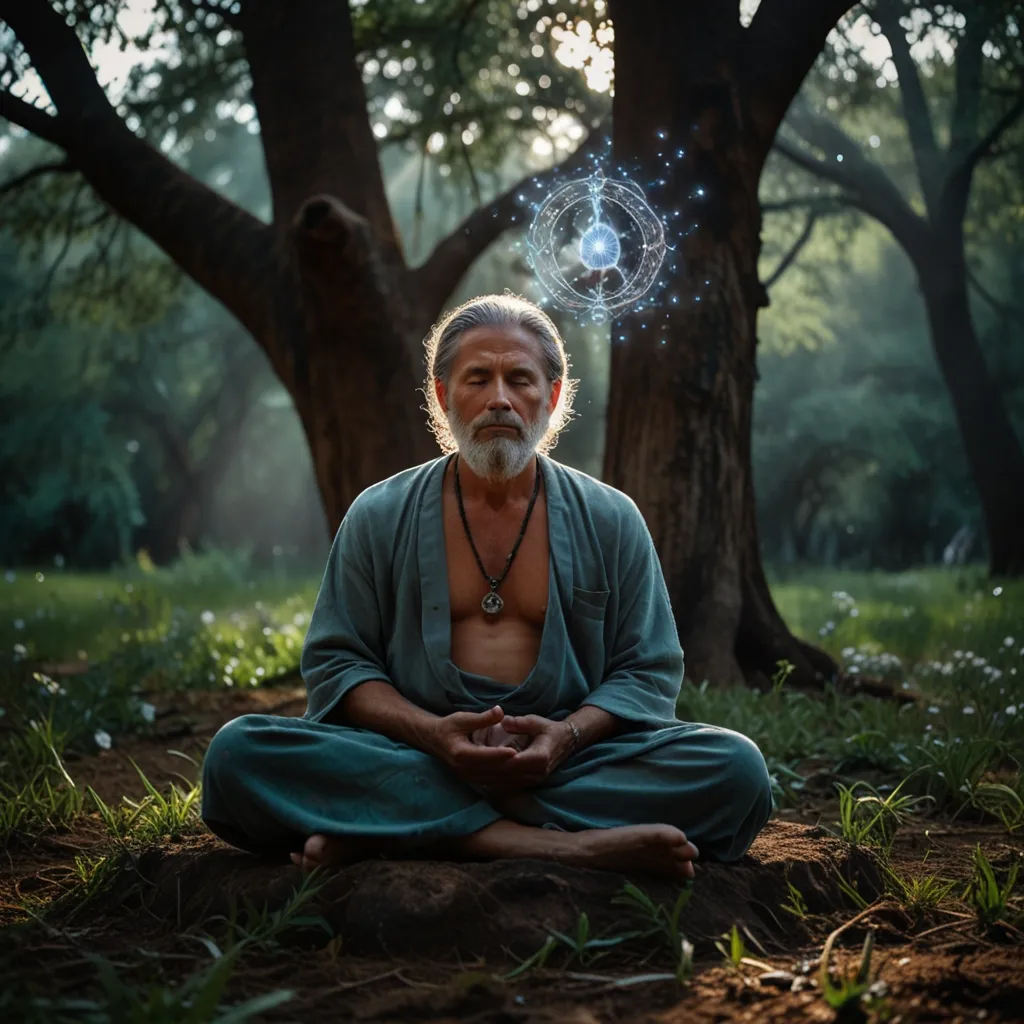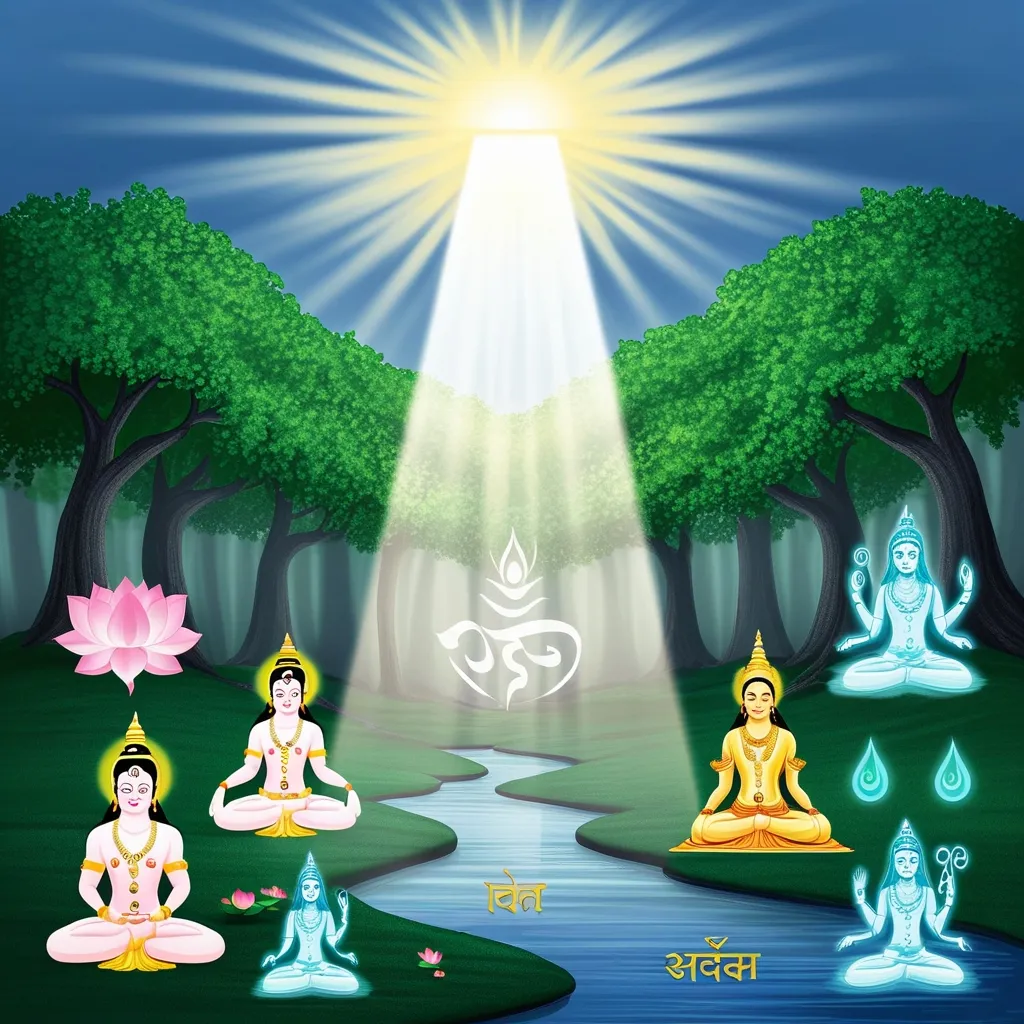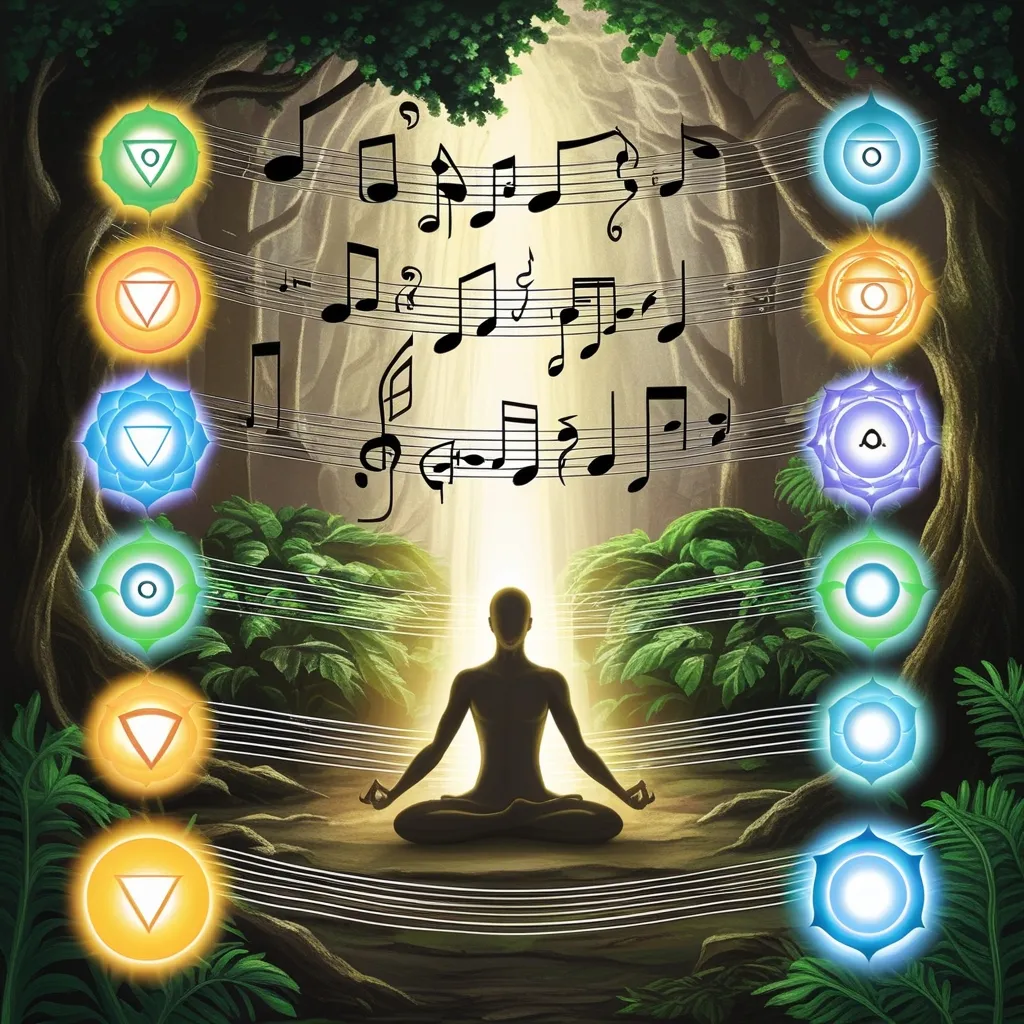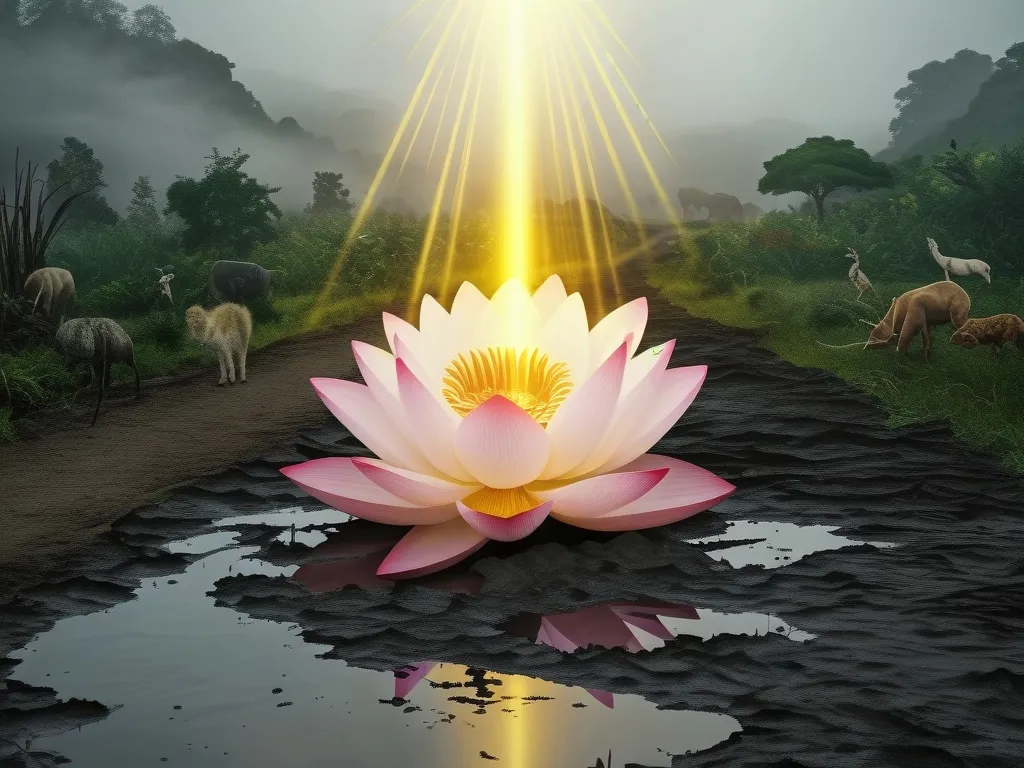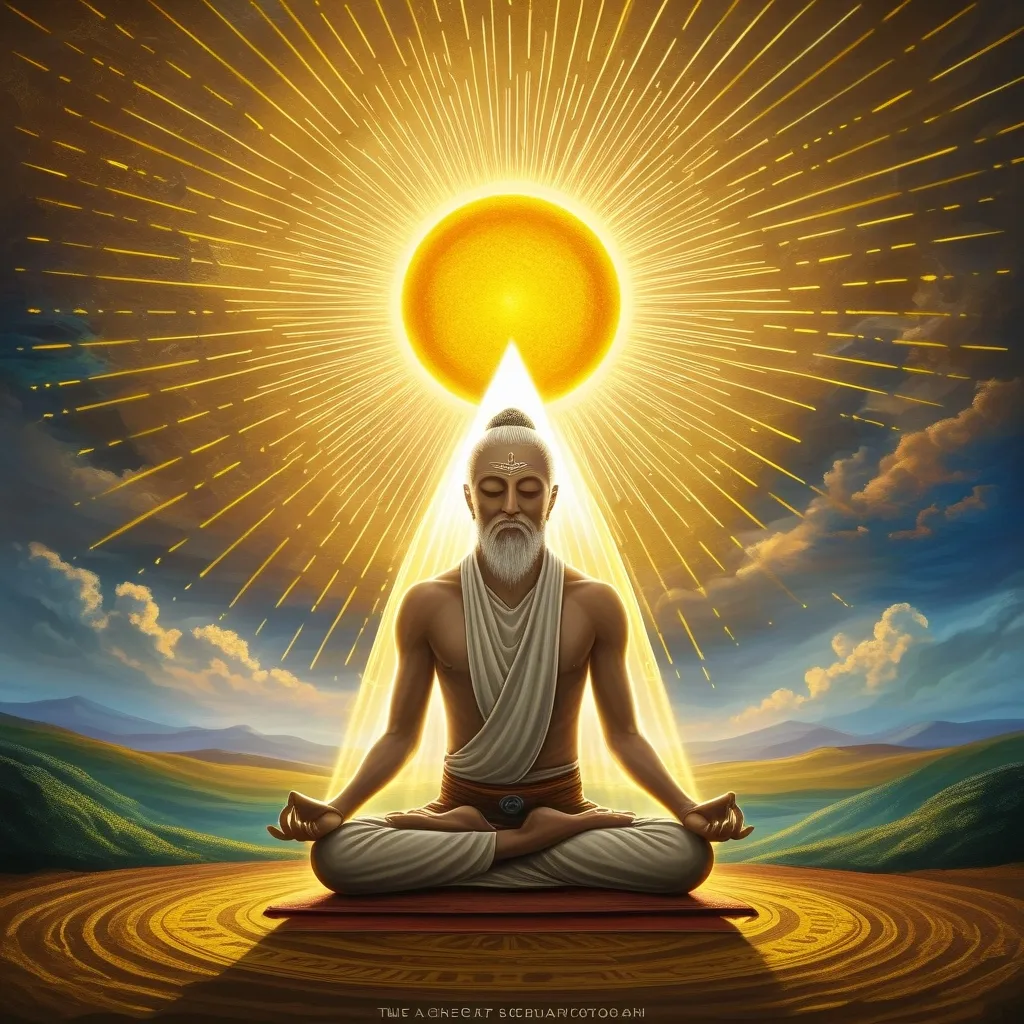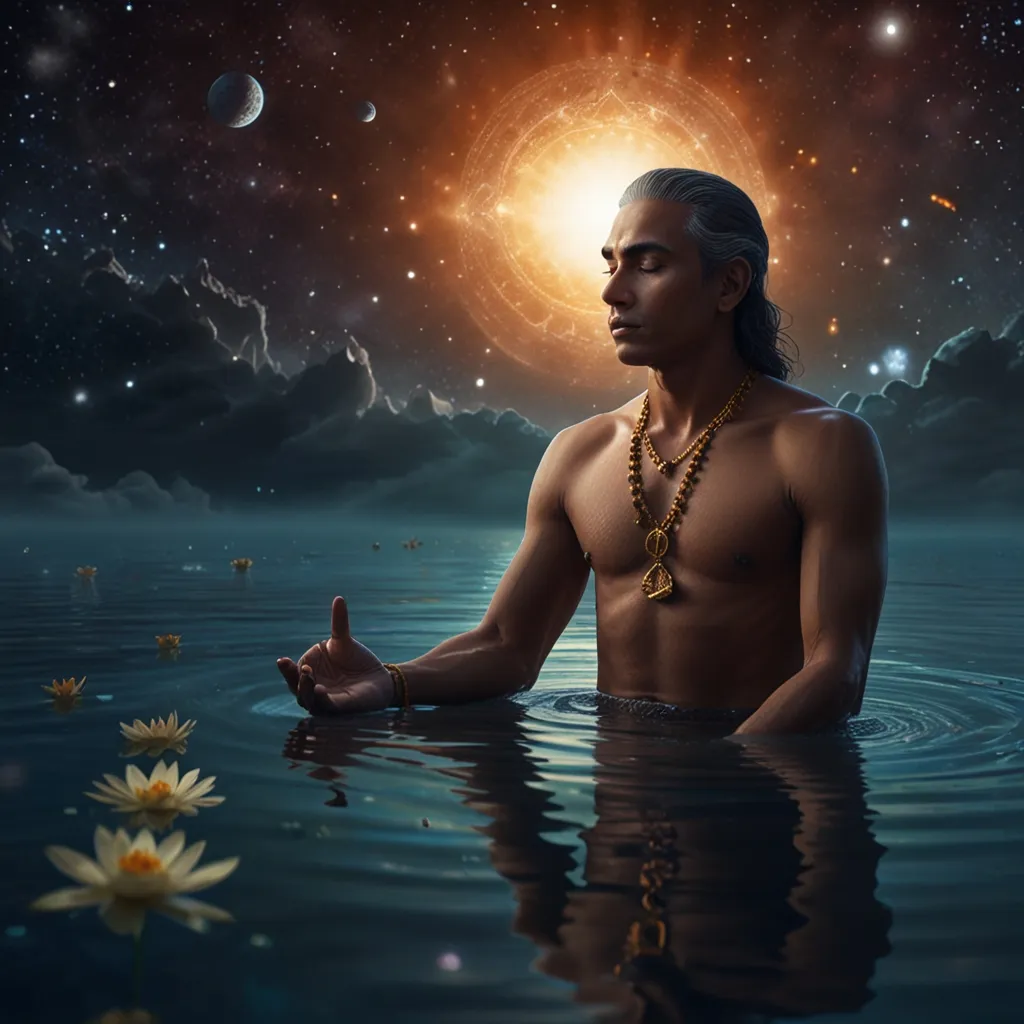As we delve into the intricate and profound philosophy of Advaita Vedanta, we often find ourselves at the crossroads of understanding the nature of reality and illusion. One of the most fascinating and nuanced concepts within this framework is Vivarta, or the theory of apparent transformation. This idea, while often overshadowed by more familiar Vedantic principles, offers a unique and insightful perspective on how the unchanging Absolute manifests as the ever-changing world.
To grasp Vivarta, let’s start with a simple yet powerful analogy. Imagine a rope in the twilight, mistaken for a snake. Here, the rope itself does not transform into a snake; it merely appears to be one due to our limited perception. Similarly, in Vivarta, the world and our bodies are seen as mere appearances or superimpositions on the ultimate reality, Brahman. This concept is central to Advaita Vedanta, where Brahman is considered the immutable and eternal essence that underlies all existence.
The key to understanding Vivarta lies in its distinction from other theories of causation. Unlike Parinamavada, which suggests that the world is a real transformation of Brahman, Vivarta posits that the world is merely an illusory manifestation. This means that while Brahman appears to change and take on various forms, its essence remains unaltered. This idea is rooted in the concept of Maya, Brahman’s inscrutable and mysterious power that creates the illusion of a changing world.
When we apply this concept to our everyday experience, it becomes clear that our perception of the world is filtered through a veil of ignorance, or Avidya. This ignorance causes us to see the world as a multitude of separate entities, rather than as a unified whole. However, when we gain knowledge of Brahman, this veil is lifted, and we realize that the world’s diversity is merely an appearance. The fear and confusion that arise from our mistaken perceptions disappear, much like the fear of the snake on the rope vanishes when we realize it is just a rope.
The implications of Vivarta are profound. It suggests that the world we experience is not a true modification of Brahman but rather an illusory manifestation arising from our ignorance and the interplay of Maya. This understanding challenges our conventional views on creation and perception, encouraging us to look beyond the surface level of reality.
Advaitic seers, such as Adi Shankara, have elaborated on this concept, though there is some debate among scholars about whether Shankara himself advocated Vivarta or a more transformation-based theory. Regardless, the essence of Vivarta remains a cornerstone of Advaita philosophy. It reconciles the unchanging nature of ultimate reality with the dynamic appearance of the universe, offering a unique solution to the paradox of unity and diversity.
In practical terms, Vivarta teaches us to discern between the real and the apparent. It encourages us to look beyond the fleeting nature of the world and to seek the eternal and unchanging essence that underlies all existence. This perspective is not just a philosophical abstraction but a practical wisdom that can guide us in our daily lives. By recognizing that our perceptions are often clouded by ignorance, we can strive for a clearer understanding of reality.
The concept of Vivarta also sheds light on the nature of consciousness. According to Advaita Vedanta, consciousness is not a property of Brahman but its very nature. Brahman is pure existence, pure consciousness, and pure bliss. This understanding helps us see that our individual consciousness is not separate from Brahman but is, in fact, a reflection of it. The realization that our individual selves are not different from Brahman is a liberating insight that can free us from the cycle of transmigration and worldly bondage.
As we journey deeper into the concept of Vivarta, we find that it offers fresh perspectives on the origin of the world and the path to self-realization. It challenges us to rethink our assumptions about creation and the nature of reality. By understanding that the world is an illusory manifestation of Brahman, we are prompted to seek the underlying truth rather than getting entangled in the appearances.
This concept is not just a theoretical construct but has practical implications for spiritual seekers. It guides us towards a path of self-realization where we strive to remove the veil of ignorance and realize our true nature. The process involves recognizing that our individual selves are mere reflections of the ultimate reality and that the world’s diversity is an illusion.
In essence, Vivarta is a cosmic catalyst that prompts us to question our perceptions and seek a deeper understanding of reality. It is a transformative principle that, when grasped, can lead to profound insights and a more meaningful existence. Whether you are a student of Vedanta, a seeker of truth, or simply curious about different approaches to understanding existence, exploring Vivarta promises to enrich your understanding of the cosmos and your place within it.
As we navigate the complexities of life, Vivarta reminds us that the world we see is not the ultimate reality. It encourages us to look beyond the surface, to seek the unchanging essence that underlies all existence. This journey of discovery is not just about understanding a philosophical concept but about transforming our very way of seeing the world and ourselves. By embracing Vivarta, we embark on a path that leads us to the heart of Advaita Vedanta, where the distinctions between the self and the universe dissolve, revealing a unified, eternal, and unchanging reality.

